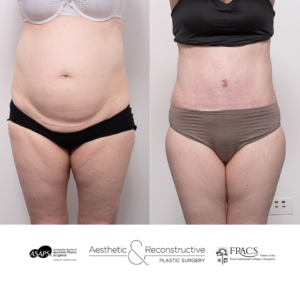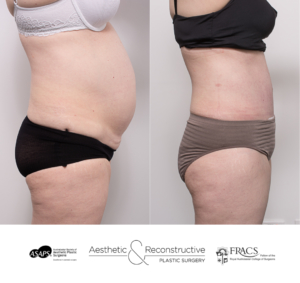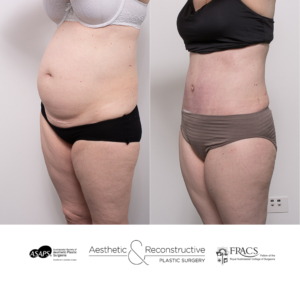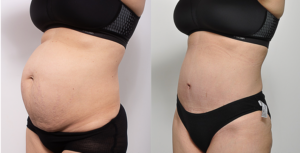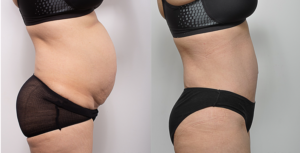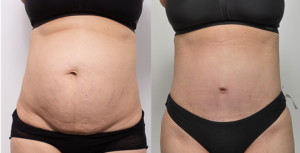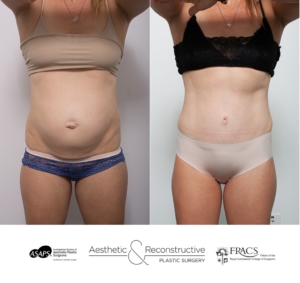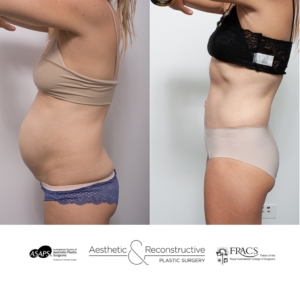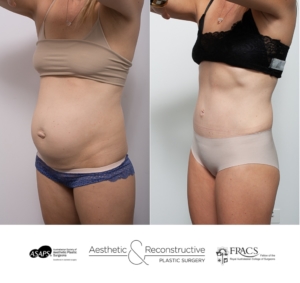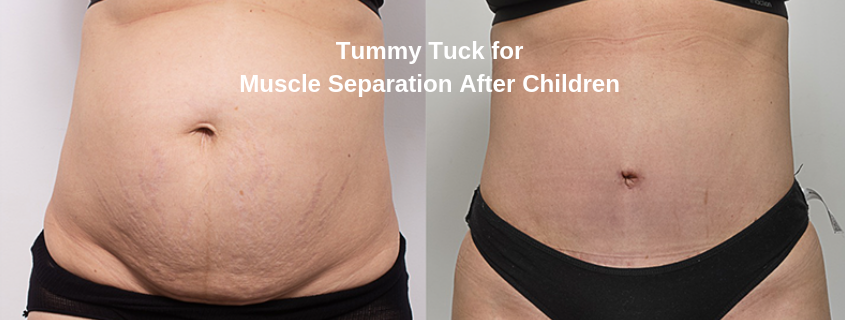
Muscle separation, also called diastasis recti or separated abs, is a common condition many women find themselves with after pregnancy and childbirth. In fact, muscle separation actually occurs during the last trimester in the pregnancy when the growing baby pushes your abdominal muscles apart to fit! While many women’s muscles return to a somewhat normal position after the baby’s birth, some do not, and this can lead them to needing a tummy tuck for muscle separation. Dr Eddie Cheng spoke to us about what’s involved in this procedure and showed us some of his before and after patient photos.
The new Medicare Item Number 30175 can now be used to partly subsidise your Abdominoplasty Surgery for Diastasis Recti if you meet the strict Medicare 30175 criteria.
How do you know if you have diastasis recti, or separated abdominal muscles?
Think you might have diastasis recti? You’re not alone. It is estimated that approximately 40% of women suffer from muscle separation up to six months after giving birth. One Norway study estimates that 30% of women have it up to a full year after birth. Besides most patients having the obvious physical symptoms it often presents, there are other signs you may have abdominal separation including:
- Back, pelvic or hip pain
- Bulging or bloated looking belly
- Weakened pelvic floor muscles leading to incontinence
- Inability to stand up straight, or only with pain
- Painful sex
- Digestive issues
Am I a good candidate for a tummy tuck?
The best candidates for a tummy tuck are in good physical condition with pockets of fat or loose skin that haven’t responded well to traditional diet and exercise. Tummy tucks can also be useful for women with stretched skin and muscles from pregnancy. Dr Cheng says results from the tummy tuck procedure will likely diminish if women continue to bear children. “We advise patients who plan to become pregnant to consider postponing this procedure until they are finished having children. We also encourage patients who intend to lose weight to delay surgery until they reach their goal weight, since skin in the abdominal area typically loosens after substantial weight loss. Ideally your weight should be stable for at least 6 months prior to surgery.”
In terms of safety and results it is also important to consider your body mass index. Ideally your body mass index should be less than 30 for safety and better aesthetic outcomes. Dr Cheng says, “The reason is that tummy tuck surgery can’t remove what we call visceral fat or fat that coats the heart, kidneys, liver, digestive organs and pancreas. You can learn more about Body Mass Index and surgery safety on our website.”
Can you fix separated muscles with exercises?
In some cases yes. However Dr Cheng says it’s important to know exactly which exercises can help with muscle separation and which ones won’t. “Gentle pelvic floor muscles and any core strengthening exercises are generally good for women with muscle separation. There are different degrees of separation, however if it is more severe it is likely to only be corrected with surgery.”
Unfortunately, the Australian government recently removed Medicare item numbers relating to abdominoplasty and tummy tucks for women after pregnancy and childbirth, so you’re on your own. However, Dr Cheng says that there are rebates for massive weight loss so this may apply to some women. “The best way to see if you are eligible is to talk to your plastic surgeon during a consult and of course my knowledgeable team can also provide you with an indication of whether you may meet the Medicare criteria for post weight loss surgery. A referral from your GP is recommended and essential if you qualify for post weightloss surgery and I always suggest that the referral includes evidence of how you meet the medicare criteria.” Of course, something to note when thinking about your heaviest weight is that it cannot include the weight of your baby, placenta and amniotic fluid that is your weight when you were carrying a child. Dr Cheng also says it’s wise to wait at least a year after your last child is born before considering a tummy tuck to repair separated muscles. “So your body has a chance to fully heal and for your muscles to settle and move back into place.”
What does the procedure for tummy tuck for muscle separation after children involve?
Separated muscles or abdominal separation is where the two long muscles running down the middle of your stomach separate or pull apart. They go from just under your breasts or chest right down to your pelvis. The procedure involves the surgeon suturing together your, separated or stretched muscles as well as removing any excess skin and fat from the tummy and liposuction for contouring at the same time if required. Occasionally small hernias are repaired at the same time as a tummy tuck.
Recovery after Tummy Tuck
After surgery, two surgical drainage tubes are inserted under the skin in the pubic area to drain excess fluid from the surgical site. Drains are usually removed after 3-7 days. A compression garment is worn consistently for 6 weeks and recovery time can range from 4-6 weeks to several months. You should limit strenuous activities for at least six weeks, and may need to take up to a month of work depending on the nature of your occupation. Dr Cheng will provide you with specific instructions for your individual recovery. Following these instructions can help speed up your recovery and reduce the risk of any post-surgery complications.
If you’d like more information on this procedure or to arrange a consultation with Dr Eddie Cheng click here, visit his website or phone (07) 3870 3960.
Read More Blogs about Split Tummy Muscles and Diastasis Recti
- What is Diastasis Recti by Dr Michael Kernohan Sydney Plastic Surgeon
Further Reading about Tummy Tuck Surgery for Muscle Separation Diastasis
- GOLD COAST – Tummy Tuck Gold Coast by Dr Mark Doyle
- What Is Diastasis Recti? – Split Tummy Muscles – Dr Michael Kernohan
- Mummy Makeover in Sydney – Soliman Plastic Surgery – Dr Bish Soliman
- Diastasis Recti Surgery: Repairing Abdominal Muscles – Dr Carmen Munteanu FRACS (Plas)
- Belly Bulge After Baby: Diastasis Recti or Abdominal Fat? – Dr Guy Watts

